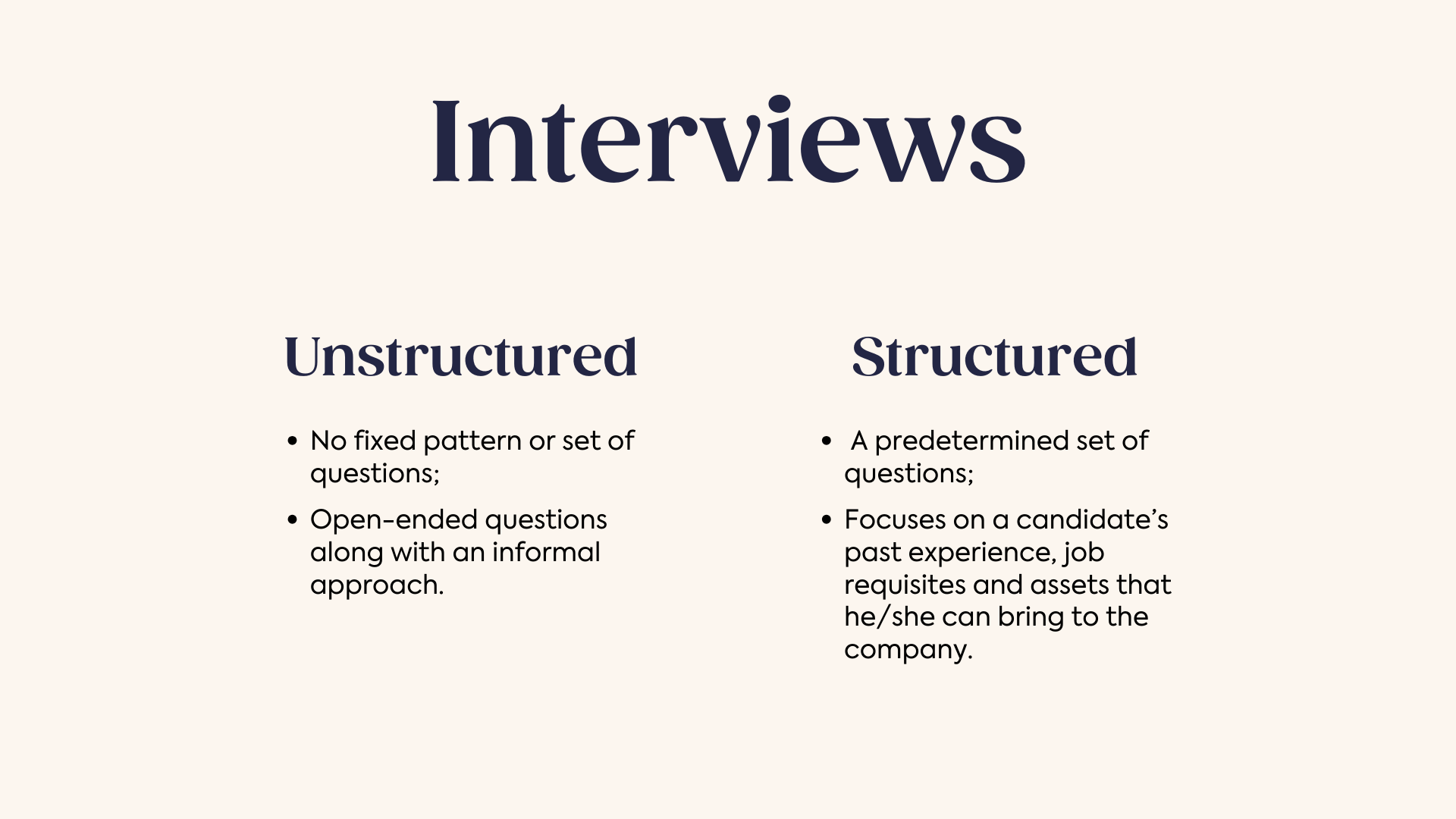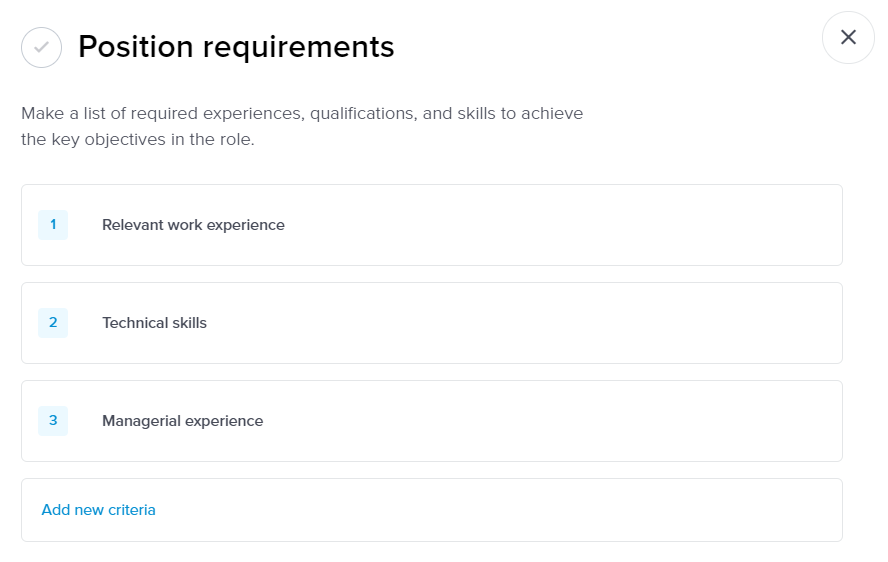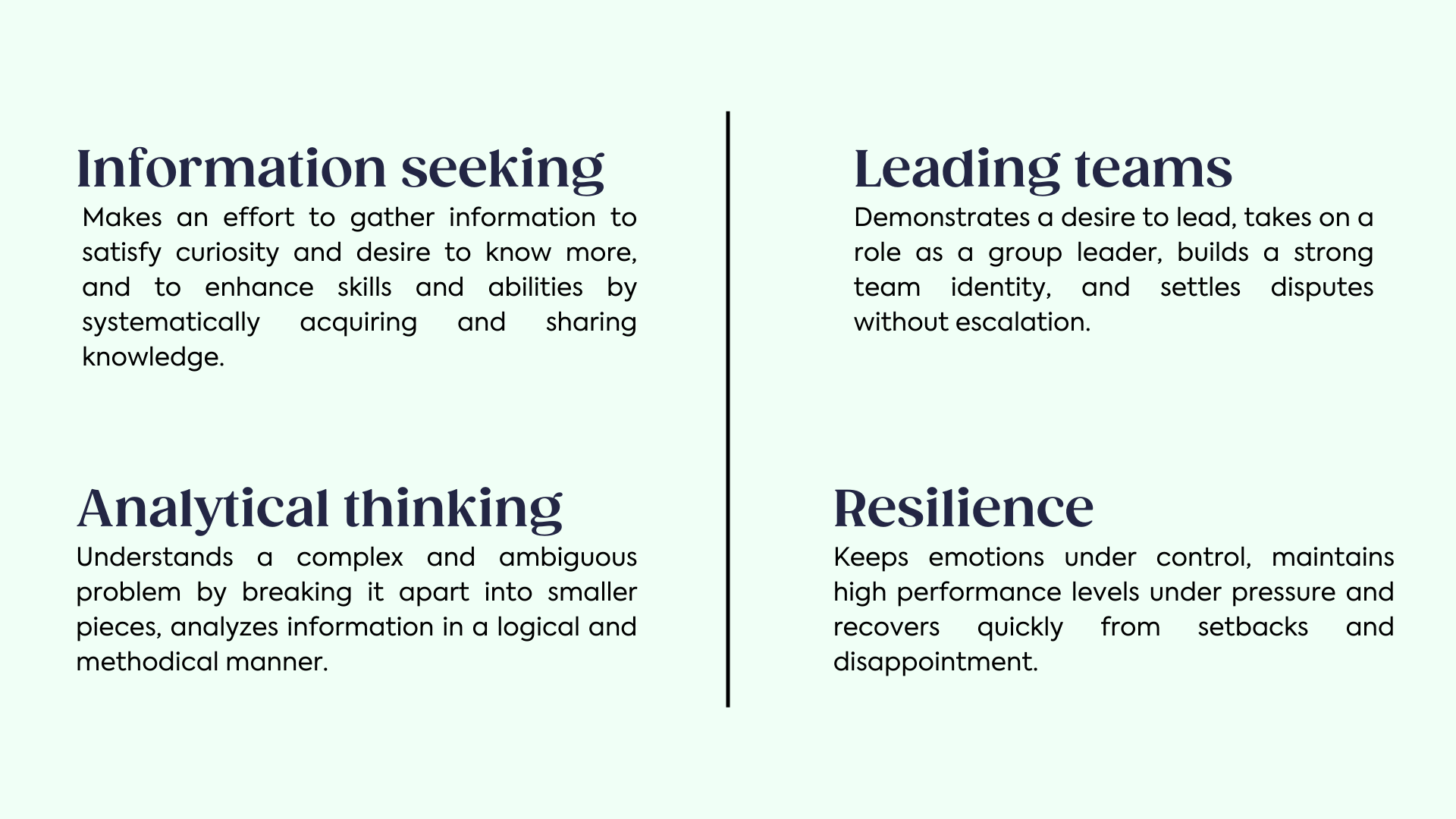A guide to behavioral interviewing
What is behavioural interviewing, how it differs from a regular hiring interview, and how to use it to your advantage.
The end goal of any hiring process is to find a candidate with the knowledge, skills, and behaviours needed to succeed at a given position. And to judge a candidate’s match, an interview is the tool used most often.
The problem with traditional interviews is that they can quickly turn into free-flowing conversations lacking structure and a clear set of goals that need to be achieved during it.
This is not to say that candidate interviews as a whole are bad. When done right, interviews can be and are a great tool. What’s needed is a different type of interview - a behavioural interview.

Behavioural interviews fall under the broader category of structured interviewing. The main difference between structured and unstructured interviews being that structured interviews follow a predetermined set of specific job-related questions, evaluate each question with an agreed rating scale, and use the same basic questions for all candidates.
Behavioural interviewing focuses on past experiences by asking questions concerning specific behaviours, skills, and abilities. The aim is to understand how candidates have acted in situations that are likely to come up in the new role.
Which interview type works best when you're looking to understand and judge the match between candidates' knowledge, skills, and behaviours?
- Structured interviews
- Unstructured interviews
- Neither
Step 1 - Analyse the position

The first step is to analyse the job opening to understand the kind of behaviours along with the required experiences, qualifications, and skills needed to achieve the key objectives in the role.
For judging and understanding behaviours, one of the best ways is to use a competencies-based approach.
Competencies are the knowledge, skills, and abilities required to perform a job successfully. In most cases, a few core competencies differentiate top performers in a given industry and job function.
Systematically defining a job's critical competencies and evaluating candidates' based on those competencies is the most objective way to shortlist candidates. Doing so brings clarity to the early stages of the hiring process, where the potential for ambiguity and bias is highest.

Example competencies from the Wisnio competency library
Based on the role, hiring managers can choose the competencies best suited for the role and use them as the basis for behavioural interview questions.
For example, people with Interpersonal Understanding understand the unspoken or partly expressed feelings, goals, and needs of others, and can relate to culturally diverse groups of people.
While a person with Attention to Detail manages information to reduce uncertainty in the surrounding environment and is driven to ensure order, quality, and accuracy.
You can develop your own competency library (many companies have) or use a ready-made library of competencies to choose from. At Wisnio, we use a library of 20 competencies based on research by Spencer and Spencer.
What are competencies?
- Another name for job requirements
- The knowledge, skills, and abilities required to perform a job successfully.
- The skills needed to achieve the key objectives of the role.
Step 2 - Interview questions
After analysing the job opening, you end up with a list of requirements and competencies that candidates need to fulfil. The next step is coming up with methods to evaluate those.
With some, for example, prior work experience or professional qualifications, the evaluation is easy. The candidate either has the needed work experience or professional qualifications or not. For others, like evaluating competencies, things are a little more complicated.
As the aim is to understand a candidate's past experience and actions in similar situations, the questions have to be worded to make it easy for the candidates to, in essence, tell a short story about a similar experience.
There are many ways to construct behavioral interview questions with one approach - the STAR model, being especially popular.
"One thing that we liked and found really valuable is candidate-specific behavioural interview questions and interview guide. This helps professionalise the process. With Wisnio, everyone can be an HR professional."
Milan Zahradnik - Founder & CEO, PROPSTER
The STAR model of behavioral interviewing
STAR stands for Situation, Task, Action, Results, and it helps candidates by encouraging them to answer with a short story about past behavior.
Situation: What was the situation the candidate was in?
Task: What was the task the candidate needed to accomplish?
Action: What were the actions the candidate took to accomplish this task?
Results: What were the results of these actions?
Example:
- Situation - “Give an example of a time when you...”
- Task - “competed for resources at work.”
- Action - “How did you make your case?”
- Results - “Were you successful?”
Taken together, the question reads “Give an example of a time when you competed for resources at work. How did you make your case? Were you successful?”

Wording the questions this way makes it easier for candidates to understand what exactly they are being asked and it provides an easy to follow guide on how to answer.
The key is to understand how good a match the previously identified key competencies of the role match with the competencies of the candidates. As such, you should check competency match with each competency identified in the role analysis.
What does STAR stand for?
- Science To Achieve Results
- Safety Task Observation Reporting
- Situation, Task, Action, Results
Step 3 - Evaluation

The third and final part of behavioural interviewing is evaluating results with a common rating scale. At Wisnio, we use a five-point scale (scores of 1 - 5) for each hiring criteria and competency.
It’s important to note that all scoring has to happen as soon as possible after the interview and before the interview attendees have a chance to discuss the candidate among themselves.
If you just discuss first, you will most likely base your decision on your gut feeling or liking of the candidate and adjust the scores to this initial feeling, which risks hiring the wrong person. Discussion often lead to HiPPO (highest paid person's opinion) deciding and everyone else just agreeing.
When should you score evaluated candidates?
- Immediately after each interview
- After discussing my thoughts with my peers
- When all the interviews are done
Conclusions
Hiring a new employee is never an easy task. There are many opportunities for the process to run amok and the wrong person being hired.
Having a clear understanding of the process and the role being hired into gives a good basis for a better hiring experience and ensures that every step of the hiring process is there for a clear reason.
By using behavioral interview, hiring managers are able to remove bias by focusing on past performance and help candidates better understand the role and the requirements that go along with it.
While it takes more work to initially set up a behavioural interview-based hiring process, the added benefits more than outweigh the extra time and work that goes into setting it up.